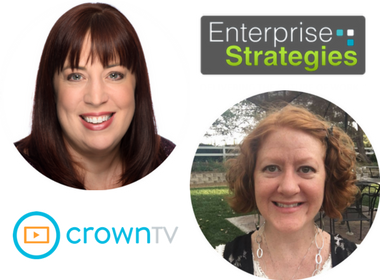The modern workplace is more connected than ever, and it’s a beautiful thing. Colleagues are an instant message away, remote work is practical and efficient, knowledge is freely exchanged and employees are more engaged. In fact, we’ve reached the point where there’s concern workplaces are too connected and experiencing “communication overload”.
How did we get to this point? Obviously a little something called the Internet has transformed the way we work. But more specifically, workplaces have harnessed the powers of social networking to boost productivity, communication and collaboration. Think social media platforms like Facebook, Twitter or LinkedIn, but designed for internal communications within businesses and organizations. Call it “enterprise social networking”, “social media for work”, “enterprise collaboration”, etc. There is no universally agreed-upon term for the practice, but it’s happening…and growing.

Because it’s still a rapidly evolving practice, we reached out to the internal communications pros at Enterprise Strategies for some insight. Enterprise Strategies is a digital strategy consulting firm specializing in enterprise social networking, social business and culture change. The firm provides a much-needed resource for businesses in this changing workplace landscape: help applying modern tools and processes to reach business goals.
We chatted with two of Enterprise Strategies’ Senior Client Advisors, Allison Maguire and Tobi Anderson, on the state of today’s internal communications and collaboration in the digital age. Here’s what we learned.
Enterprise social networking is about “working out loud”
Firstly, as we mentioned, enterprise social networking goes by many names. “Social business, enterprise social networking, social networking for work, and enterprise collaboration come to mind. My current preference – which has changed over time – is enterprise collaboration,” Tobi told CrownTV.
Regardless of what you call it, a smart way to frame it is “working out loud”.
Many of us use social media platforms like Facebook, Twitter or LinkedIn, and enterprise social networking tools like Slack or Yammer resemble these platforms in many ways. “However, in a business setting you’re ‘working out loud’ by doing things like asking questions, reading an executive’s update, sharing success stories, praising colleagues, moving conversations out of email, and participating in communities of practice (e.g. sharing best practices) or purpose (e.g. a temporary project team),” Tobi explained.

Tools are only enablers, but have huge potential
Both Allison and Tobi stressed that it’s not all about the enterprise social networking tools themselves, but how you utilize them.
“The tools are only the enablers,” Allison said. “Not all are created equal, depending on what you’d like to do.”
“I focus more on the strategy of enterprise collaboration and making sure there’s a clear purpose and approach to using the tools,” Tobi agreed.
Once they’re properly implemented, however, enterprise social networking tools have huge potential for businesses. “The benefit to organizations can include higher productivity, increased employee engagement and increased innovation,” Tobi said. Specifically, she clarified, these benefits derive from the ability to:
- Find answers faster
- Recognize colleagues and create a feeling of connectedness
- Allow ideas to come from everywhere, not just leadership
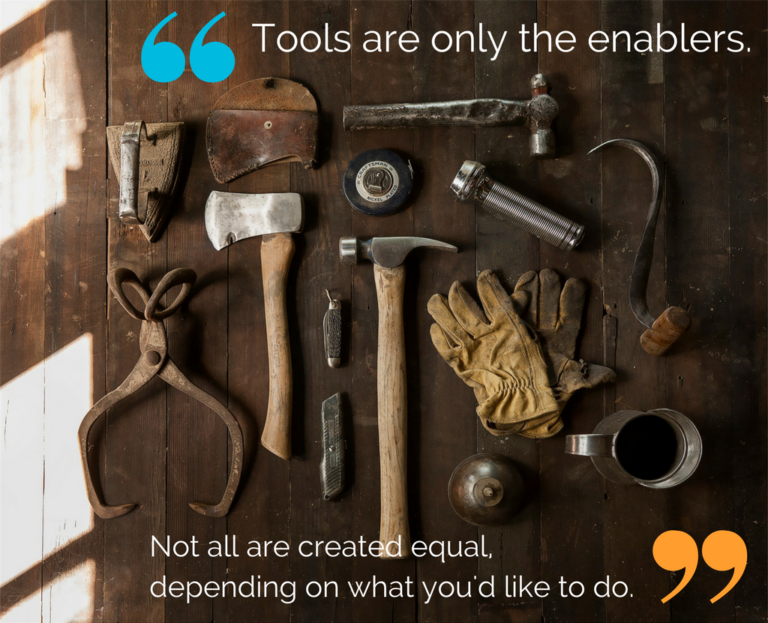
Allison believes tools “enable new ways of working, like open sharing and innovation, expertise location, co-authoring, collaborative processes and mobility.”
When asked to name some favorite tools, Yammer, Office 365, Slack, Trello, Evernote and BaseCamp were mentioned by name. Allison told us she’s “pretty excited about the mobile space right now. Tools that help you easily connect remote workers and field employees who don’t have easy access to a computer.”
The benefits can be tangible or not-so-tangible
ROI is crucial for any business, and that includes investment in enterprise social networking. But it’s important to keep in mind that not all of the benefits they bring can be expressed in numbers.
“In companies that took a strategic approach to using enterprise social networks, I’ve seen very tangible benefits of communicating within your company network,” Tobi told CrownTV. “One example is an organization who saved money when a resource was able to be used in another part of the company instead of disposing of it.”

But there are other benefits that aren’t so tangible, Tobi pointed out, “like helping a geographically dispersed team communicate easily, and also feel connected and supported.”
Always consider the human aspect
We made it a point to ask Enterprise Strategies about common mistakes and potential drawbacks of implementing new technologies for internal communications. Allison and Tobi agree that it needs to be carried out thoughtfully and intelligently, but one point was made very clear: always consider the human aspect of change.
“You can’t have digital workplace success without considering the people who will be using it. Human change takes time and an intentional approach to creating that change, starting with clearly-defined business goals and desired outcomes,” Allison emphasized.

“Companies too often focus on the tools and the business processes, and forget to account for the human aspect of change when implementing technology. Change management is important and must account for the impact to people across all levels of the organization,” Tobi told us. “Internal communications should consider employees as clients to be marketed to, always considering the WIIFM (what’s in it for me) for that audience.”
Stay goal-oriented
In addition to the human aspect, Enterprise Strategies continually emphasizes the importance of having business goals in mind when implementing any tool or technology. Because ultimately, it’s about improving your business and adding value.
“You need to understand business goals in the context of organizational culture and current ways of working. Then you look at how those goals can be enabled by the tools, and how those ways of working can be successfully evolved to embrace the potential for better collaboration in a more connected workplace,” Allison said.
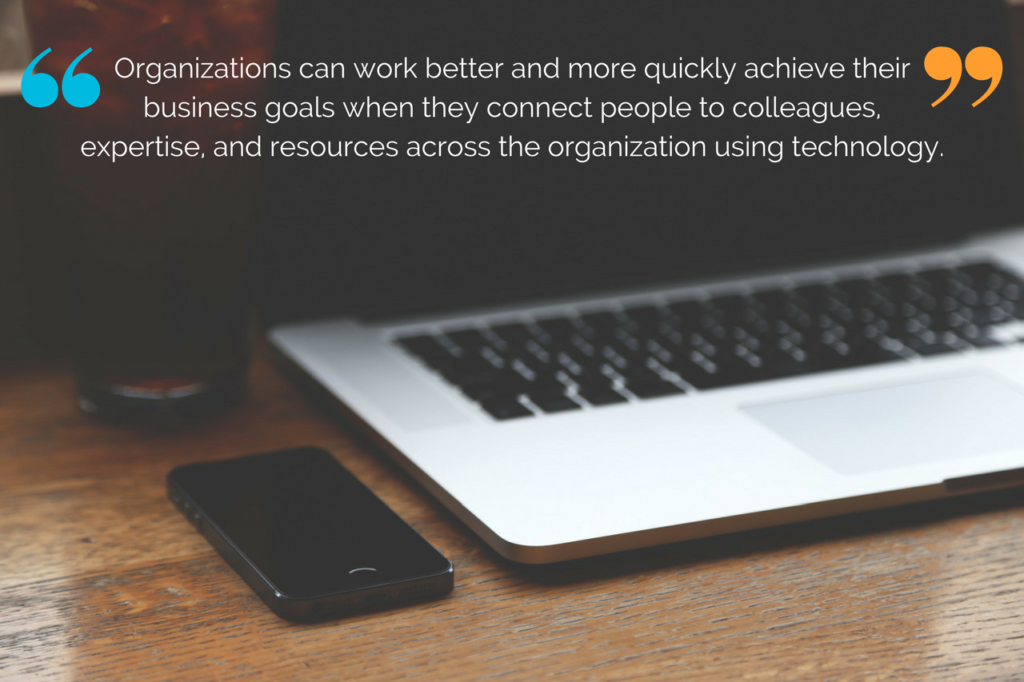
Tobi stresses this point in her very definition of “enterprise collaboration” (her preferred term for enterprise social networking): “The idea is that organizations can work better and more quickly achieve their business goals when they connect people to colleagues, expertise, and resources across the organization using technology.”
She elaborated when asked about enterprise social networking mistakes she’s witnessed. “Where I’ve seen damage done is when companies plug in the new tool of the day without a plan or clear purpose that connects to business problems,” she said. “It can cause not only tool fatigue, but also a negative view of the tools themselves, as they are seen as time-wasters.”
Video can be a powerful internal communications tool
Video has been deemed a powerful internal communications tool for years. It makes perfect sense, as everyone learns differently – visually, aurally (by listening), kinesthetically, etc. Video, Tobi pointed out, appeals to both visual and auditory learners.
Allison also likes video for internal communications, but for a different reason. She believes it helps a company’s leaders become more engaged and connected with their colleagues.
“Some leaders, for whom blogging or posting might be seen as too time-consuming, find video to be an effective platform for messaging,” she said. “Authenticity and approachability are very important in creating the sense of trust critical to employee engagement with leaders. Video can sometimes more easily achieve this by allowing employees to ‘get to know’ leaders.”
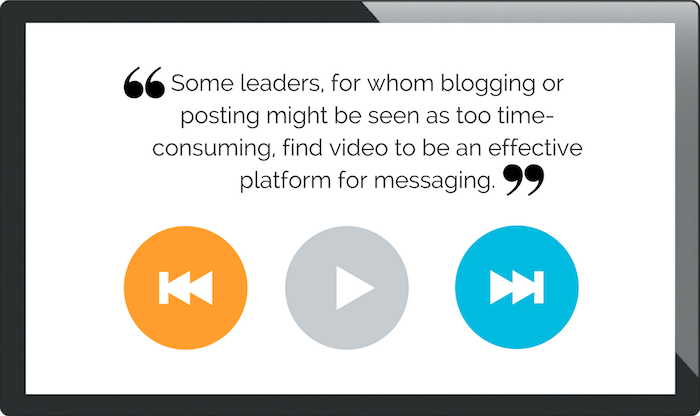
Harvard Business Review agrees that leaders need to connect digitally with their colleagues. In a popular 2015 article titled “Why No One Uses the Corporate Social Network”, social media and technology expert Charlene Li wrote “leadership participation is crucial for collaboration. Leaders know they should engage with employees, especially via digital and social channels.”
What’s a great way to show video to your team in the workplace? Digital signage, of course.
Closing Thoughts
There’s a reason Enterprise Strategies’ slogan is Delivering the Future of Work℠. And that future of work “is rapidly changing. Certainly the technology is changing far faster than our organizations and our workplaces can match,” said Allison.
With this rapid pace of change comes an urge to always have the latest technologies, simply because they’re new and shiny. Allison cautions businesses, however, to not fall into this way of thinking and instead keep their focus on solving business problems.
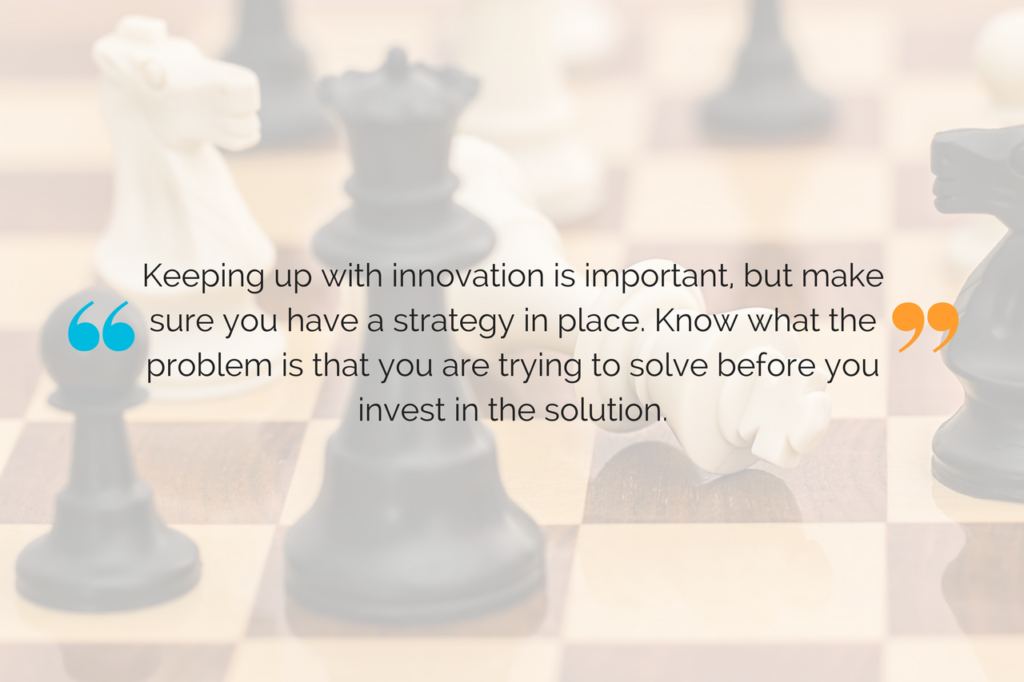
“It’s important to remember that any investment in technology solutions should be either solving a business problem or creating a new business opportunity. Keeping up with innovation is important, but make sure you have a strategy in place. Know what the problem is that you are trying to solve before you invest in the solution.”
Fortunately, firms like Enterprise Strategies can help align your business goals with the right tools and processes to get the job done. Check out the various services they offer, or visit their resources page.
And if you’re looking for a unique and effective internal communications tool, request a demo of CrownTV’s digital signage solutions and find out how you can use them to better connect your team.
About the Interviewees

Allison Maguire has 20 years of experience in a variety of technology linked roles and has worked both as a consultant and held operational and development roles within large enterprise organizations. For the last 10 years she has focused on enterprise collaboration and mobile technology enablers, knowledge management and human change management. She holds a Master’s of Science degree in Computer Information Systems from Golden Gate University.
Realizing business value from the evolution of work requires clear purpose, planning, time and perseverance. Most importantly it requires an understanding of both current ways of working and those you’d like to foster. Allison has a natural passion and energy for all things collaboration and enjoys helping organizations embrace the need for evolving ways of working through a holistic approach that focuses on changing the way people work through technology.
 Tobi Anderson is a conductor who thrives in complex, dynamic environments and helps individuals and teams find the best path forward. She’s adept at seeing the big picture, analyzing data, and getting things done, all while focusing on performance improvement & excellence. She is passionate about employee engagement and helping people grow and develop, and prides herself on having a positive attitude. Her key areas of expertise include enterprise collaboration, learning and development, talent management, organizational development, employee engagement, as well as program and change management.
Tobi Anderson is a conductor who thrives in complex, dynamic environments and helps individuals and teams find the best path forward. She’s adept at seeing the big picture, analyzing data, and getting things done, all while focusing on performance improvement & excellence. She is passionate about employee engagement and helping people grow and develop, and prides herself on having a positive attitude. Her key areas of expertise include enterprise collaboration, learning and development, talent management, organizational development, employee engagement, as well as program and change management.
Tobi has experience running her own consulting business, mentoring and developing leaders, and creating and delivering learning programs in addition to her Masters degree in Organizational Development and Training from the University of Denver. She’s worked for both private and nonprofit organizations in the technology, education, telecommunications, energy, and media industries.

